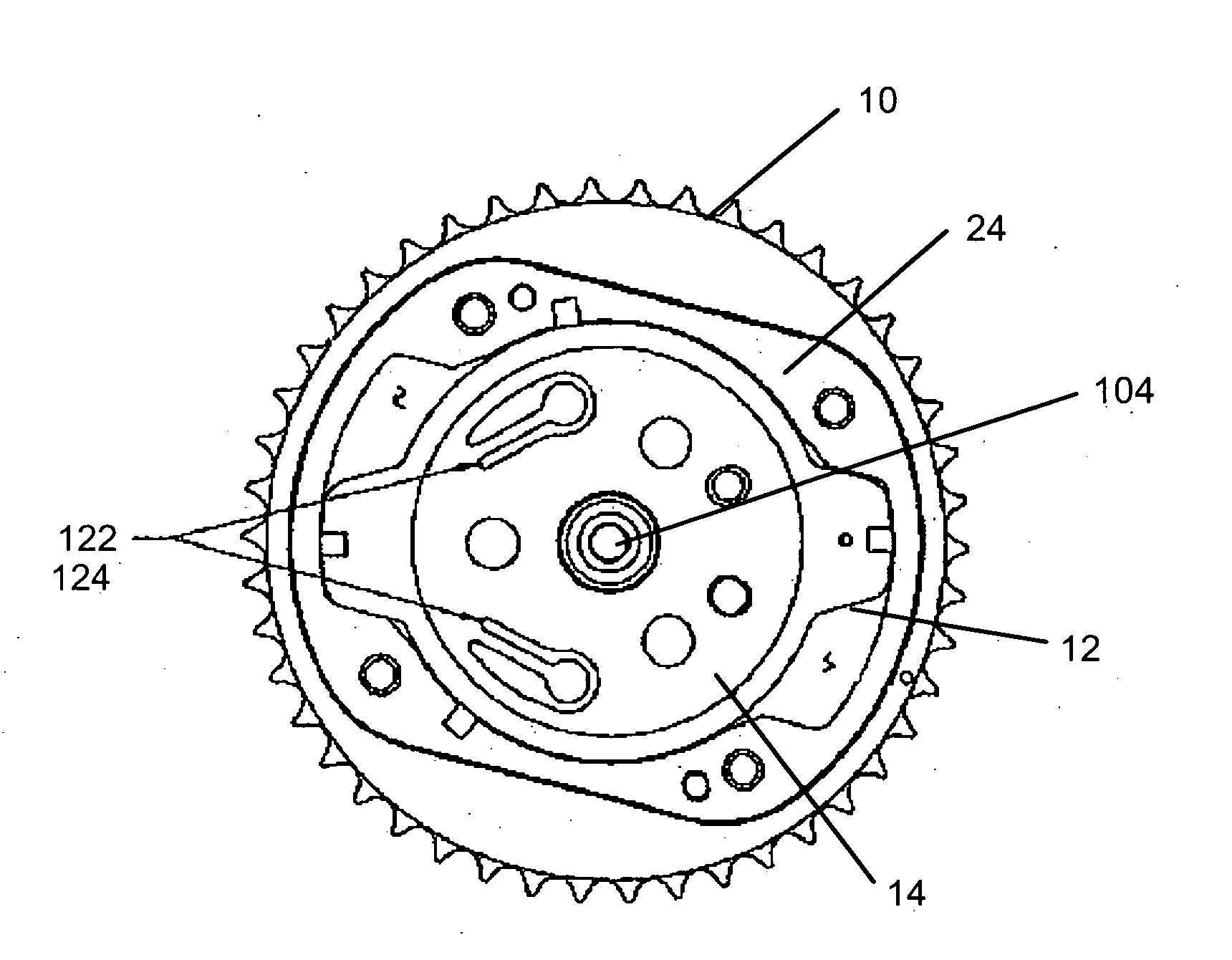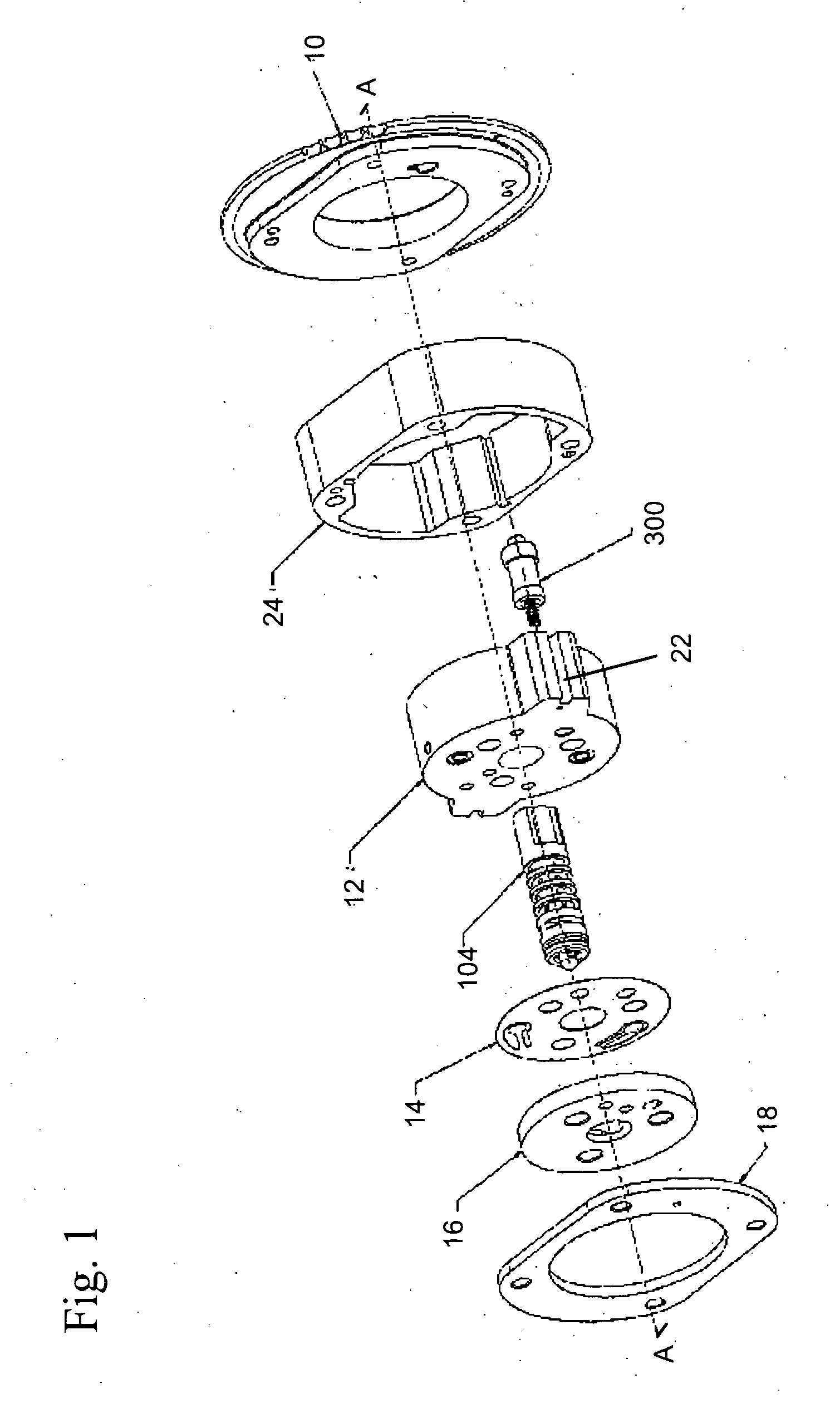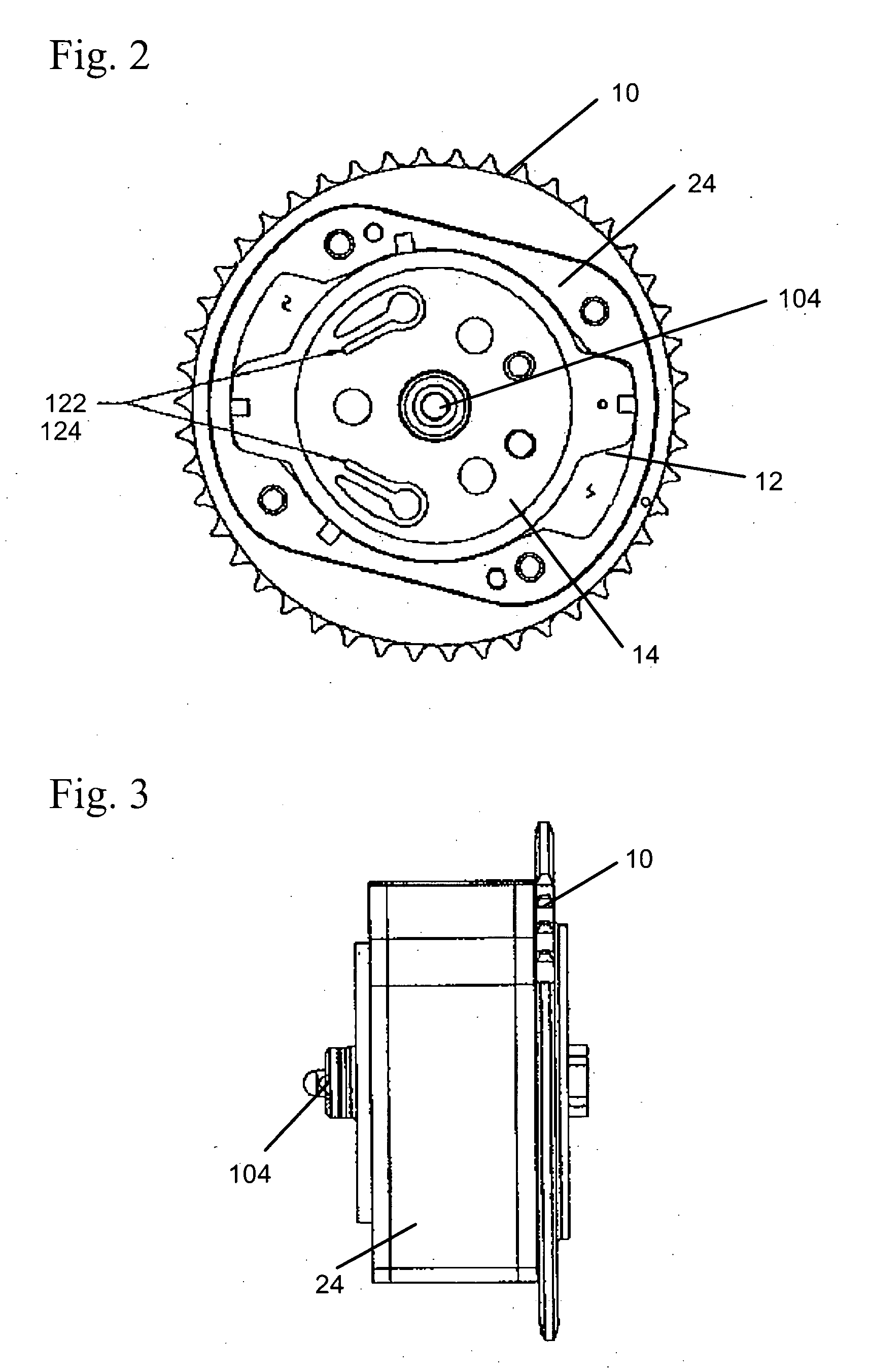CTA phaser with proportional oil pressure for actuation at engine condition with low cam torsionals
a phaser and proportional oil pressure technology, applied in the direction of valve details, valve arrangements, valve drives, etc., can solve the problems of low actuation rate, insufficient torsional energy of the camshaft to actuate the phaser over the entire speed range, and lack of proportional control at high engine speed
- Summary
- Abstract
- Description
- Claims
- Application Information
AI Technical Summary
Problems solved by technology
Method used
Image
Examples
second embodiment
[0048]FIGS. 9 through 11 shows a phaser of a FIG. 9 shows the phaser moving towards the advance position. FIG. 10 shows the phaser moving towards the retard position. FIG. 11 shows the phaser in the null position.
[0049] As stated earlier, in reference to FIG. 8, CTA phasers have a low actuation rate at high speeds. However, OPA and TA phasers have a high actuation rate at high speeds. By using a phaser with both CTA and OPA or TA portions, the phaser has a high actuation rate at both high and low speeds, resulting in satisfactory engine performance.
[0050] The housing 226 of the phaser has an outer circumference for accepting drive force. The rotor 220 is connected to the camshaft and is coaxially located within the housing 226. The rotor 220 has a first vane 206a, which is CTA and a second vane 206b, which is OPA, with the CTA vane 206a separating a first chamber formed between the housing 226 and the rotor 220 into the CTA advance chamber 217a and CTA retard chamber 217b, and the...
third embodiment
[0062]FIGS. 12 through 14 show a phaser of a FIG. 12 shows the phaser moving towards the advance position. FIG. 13 shows the phaser moving towards the retard position. FIG. 14 shows the phaser in the null position. In this embodiment, supplies for the CTA portion of the phaser and the OPA portion of the phaser are provided separately. By separating the supplies for the OPA and the CTA portions of the phaser with inlet check valve 354, an unrestricted supply to the OPA advance chamber 317c is provided for the OPA portion of the phaser only, since it is not necessary for the CTA portion of the phaser. Furthermore, by isolating the supplies to the different portions of the phaser, the supplies are less sensitive to aeration, which can increase oscillation.
[0063] As stated earlier, in reference to FIG. 8, CTA phasers have a low actuation rate at high speeds. However, OPA and TA phasers have a high actuation rate at high speeds. By using a phaser with both CTA and OPA or TA portions, th...
fourth embodiment
[0083] The OPA portion of the phaser of the fourth embodiment is oil pressure actuated (OPA). Line 445 from the spool valve 409 provides fluid to the OPA advance chamber 417c, moving the OPA vane 406b, causing fluid in the OPA retard chamber 417d to exhaust or vent through line 453.
[0084] In moving towards the retard position, as shown in FIG. 16, the force of the control pressure from the RPCS valve 400 in line 456 was reduced and the spool 404 was moved to the left in the figure by spring 418, until the force of spring 418 balanced the force of the control pressure of the RPCS. With the spool 404 in this position, fluid in the sleeve 455 is forced out of the spool valve 409 through line 456 to the control port C of the RPCS valve 400. From the control port C of the RPCS valve, the fluid exhausts through the exhaust port E to line 415.
[0085] With the spool in the position shown, spool land 409b blocks line 414, spool land 409c blocks line 410, lines 412, 416, 408, and 447 are open...
PUM
 Login to View More
Login to View More Abstract
Description
Claims
Application Information
 Login to View More
Login to View More - R&D
- Intellectual Property
- Life Sciences
- Materials
- Tech Scout
- Unparalleled Data Quality
- Higher Quality Content
- 60% Fewer Hallucinations
Browse by: Latest US Patents, China's latest patents, Technical Efficacy Thesaurus, Application Domain, Technology Topic, Popular Technical Reports.
© 2025 PatSnap. All rights reserved.Legal|Privacy policy|Modern Slavery Act Transparency Statement|Sitemap|About US| Contact US: help@patsnap.com



